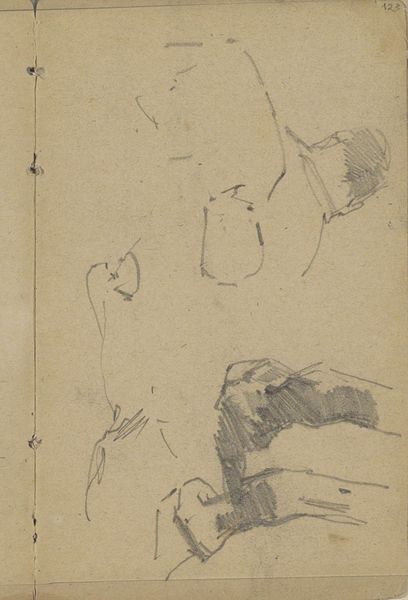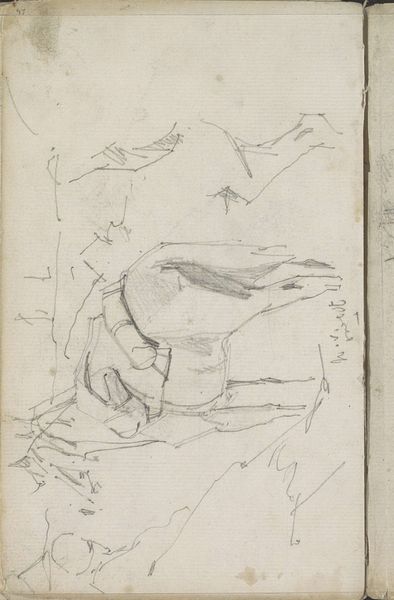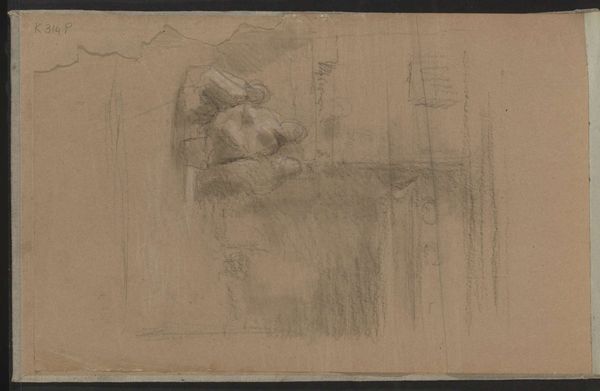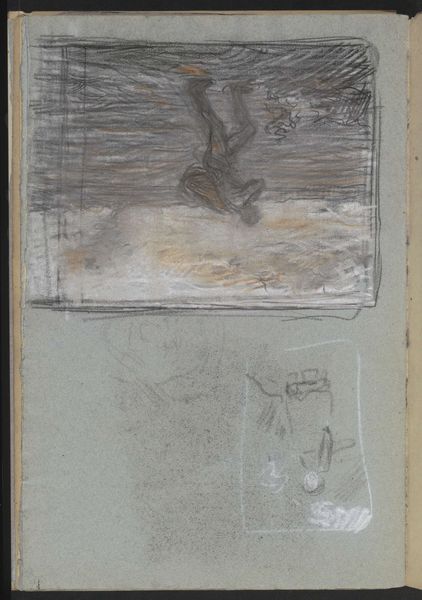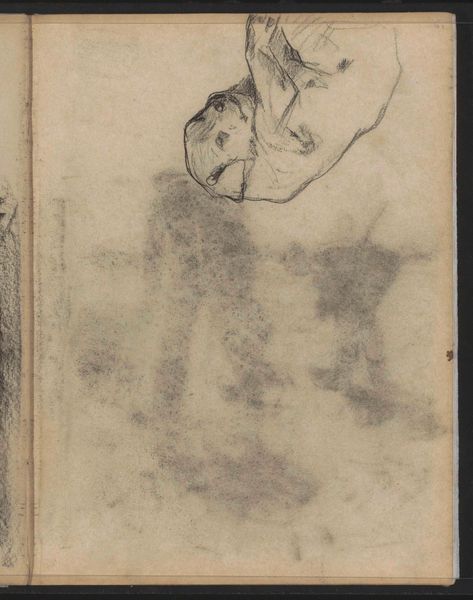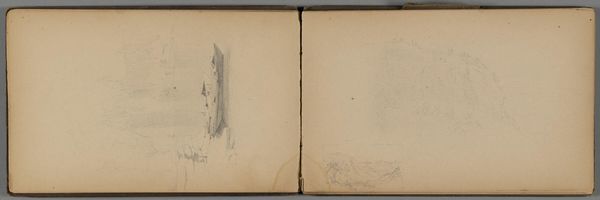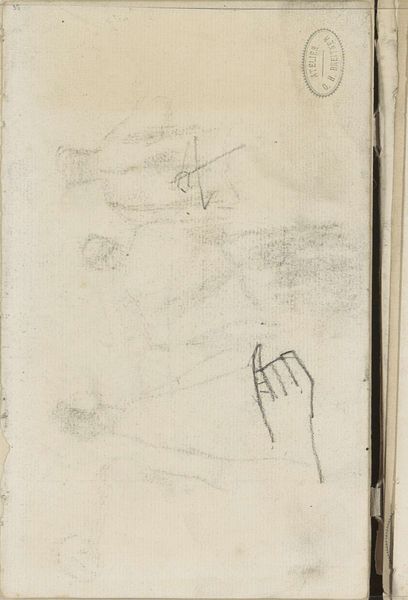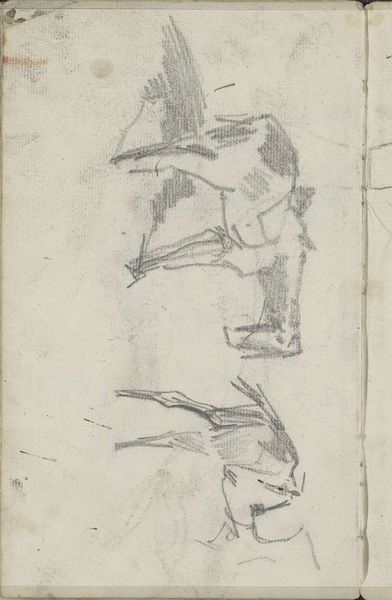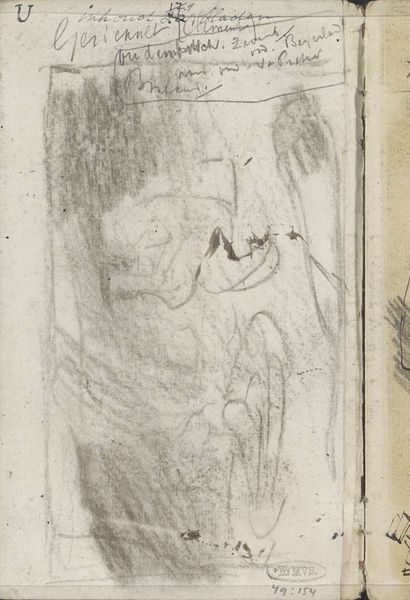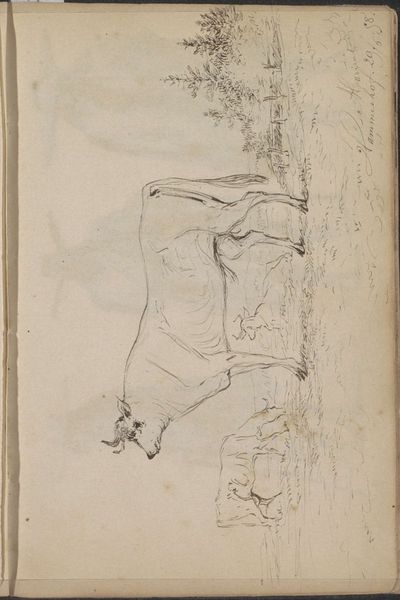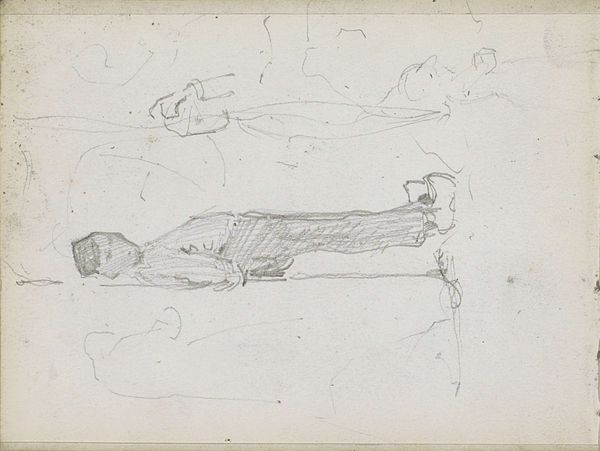
drawing, graphite
#
drawing
#
impressionism
#
landscape
#
coloured pencil
#
graphite
#
realism
Copyright: Rijks Museum: Open Domain
Curator: Welcome. Before us, we have Anton Mauve's "Koeien," or "Cows," a drawing from sometime between 1876 and 1888. It resides here at the Rijksmuseum, crafted with graphite and colored pencil. Editor: My first impression is one of quiet observation. It feels like a stolen moment, raw and immediate in its rendering. The scale emphasizes the intimacy, inviting us into a private, pastoral scene. Curator: Mauve was certainly keen on capturing fleeting impressions, influenced by the burgeoning Impressionist movement. The emphasis seems to be on line and form here, a preliminary study perhaps? Note how the animals almost blend with the landscape. Editor: Yes, and isn’t it remarkable how even in this seeming simplicity, one can read volumes? Consider the position of those cows—passive recipients of the human gaze, domesticated bodies reduced to aesthetic subjects. It begs the question of agrarian life and our complicated relationships with the non-human world at that time. Curator: An interesting angle. Though, I tend to appreciate it for its formal qualities: the way Mauve uses hatching and cross-hatching to build volume and the skillful placement of the cows creating depth within an otherwise limited field of vision. Editor: Agreed. But the act of placing them there has resonance too. I see this drawing as mirroring shifts in society where traditional forms of labor and land usage were transitioning due to industrial advancement. It prompts one to examine those shifts that continue to ripple through our societal fabric. Curator: Indeed. I find that my focus keeps returning to how well Mauve captures light and texture through minimal means, it possesses a deceptive complexity, each mark working together harmoniously to build the forms and space. It’s masterful. Editor: Absolutely. It reminds us to continually consider and critique our relationship to the environment, and the lasting marks left by those past industrial and agrarian endeavors. These 'fleeting impressions' can be profoundly lasting in what they reveal about human imprint. Curator: A stimulating point, indeed. It leaves one with a renewed appreciation for the enduring dialogue between form, content, and context.
Comments
No comments
Be the first to comment and join the conversation on the ultimate creative platform.
